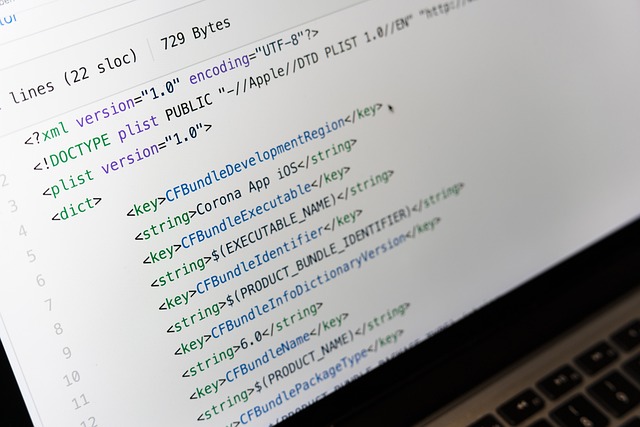In the ever-evolving world of blockchain and cryptocurrencies, atomic swaps stand out as a revolutionary technology. They enable direct peer-to-peer trading across different blockchains without the need for intermediaries. This article delves deep into the intricacies of atomic swaps, offering developers a thorough understanding of its mechanics, benefits, and implementation.
What Are Atomic Swaps?
Atomic swaps, also known as cross-chain trades or atomic cross-chain trading, are decentralized exchanges of cryptocurrencies between two parties based on a smart contract. This technology ensures that the swap between two parties happens simultaneously or not at all, eliminating the risks associated with traditional exchanges.
The Mechanics Behind Atomic Swaps
To understand atomic swaps, one must first grasp the concept of Hashed TimeLock Contracts (HTLCs). HTLCs are a type of smart contract used in atomic swaps to ensure that the transaction is either completed by both parties or refunded to the original sender after a specified time.
Benefits of Atomic Swaps for Developers
Decentralization at Its Best
Atomic swaps epitomize the decentralized ethos of blockchain. They remove the need for third-party intermediaries, ensuring that trades are direct, peer-to-peer, and secure.
Enhanced Security
With atomic swaps, the risk of hacks and security breaches associated with centralized exchanges is eliminated. The simultaneous nature of the transaction ensures that neither party can cheat the other.
Cost-Efficient and Fast
By eliminating intermediaries, atomic swaps reduce transaction fees. Moreover, they expedite the trading process, making it faster than traditional methods.
Implementing Atomic Swaps: A Developer’s Perspective
For developers keen on integrating atomic swaps into their platforms, understanding the underlying protocols is crucial. The process involves:
- Initiation: One party initiates the process by creating an HTLC and depositing the cryptocurrency they wish to swap.
- Verification: The second party verifies the transaction and creates their own HTLC.
- Completion: Both parties verify each other's transactions. Once verified, the swap is executed, and both parties receive their respective cryptocurrencies.
- Refund: If one party fails to verify within the specified time, the HTLC ensures that the funds are returned to the initiating party.
Challenges and Considerations
While atomic swaps offer numerous benefits, developers should be aware of potential challenges:
- Liquidity Issues: For atomic swaps to be efficient, both blockchains involved need to have sufficient liquidity.
- Complexity: Implementing atomic swaps requires a deep understanding of blockchain protocols and smart contract intricacies.
Future Prospects of Atomic Swaps
As the blockchain industry continues to grow, atomic swaps are poised to play an even more significant role in the future. Here's a glimpse into what lies ahead:
Integration with Decentralized Finance (DeFi)
DeFi platforms are rapidly gaining traction, and atomic swaps can further bolster their decentralized nature. By integrating atomic swaps, DeFi platforms can offer users more seamless and secure cross-chain interactions.
Expansion to More Blockchains
Currently, atomic swaps are predominantly used with blockchains that support the same hashing function. However, with advancements in technology, we can anticipate atomic swaps becoming compatible with a broader range of blockchains, further enhancing their utility.
Enhanced User Interfaces
For atomic swaps to gain mainstream adoption, user-friendly interfaces are crucial. Developers are working tirelessly to create intuitive platforms that make the atomic swap process as straightforward as possible for users.
Regulatory Landscape
As with all innovations in the cryptocurrency space, atomic swaps will likely attract regulatory attention. Developers and users alike should stay informed about potential regulatory changes that could impact the use and implementation of atomic swaps.
Conclusion
Atomic swaps are undoubtedly a game-changer in the blockchain realm. They offer developers a secure, fast, and decentralized method of exchanging cryptocurrencies. By understanding and harnessing this technology, developers can pave the way for a more interconnected and efficient blockchain ecosystem.
FAQs on Atomic Swaps
Q1: What are the primary cryptocurrencies that support atomic swaps?
Answer: Bitcoin, Litecoin, and Decred were among the first to support atomic swaps. However, many other cryptocurrencies are now adopting this technology, and the list continues to grow.
Q2: Are atomic swaps the same as decentralized exchanges?
Answer: While both atomic swaps and decentralized exchanges (DEX) promote peer-to-peer trading without intermediaries, they are not the same. Atomic swaps allow for cross-chain trading, while DEXs typically operate on a single blockchain.
Q3: How long does an atomic swap transaction take?
Answer: The duration of an atomic swap depends on the blockchains involved and their respective transaction times. Generally, atomic swaps can be completed within minutes, but it's essential to account for potential network congestion.
Q4: Are atomic swaps safe?
Answer: Atomic swaps are inherently secure due to their decentralized nature and the use of HTLCs. However, as with all online transactions, users should exercise caution and ensure they're trading with trusted parties.
Q5: Can atomic swaps be reversed?
Answer: No, once an atomic swap is completed, it cannot be reversed. This immutability is a fundamental characteristic of blockchain transactions.


